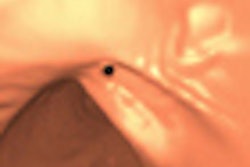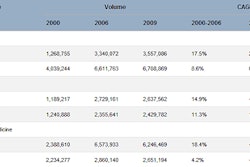Although people living in poverty are at higher risk for comorbid conditions associated with increased exposure to radiation, when the factor of comorbidity is controlled, being poorer doesn't necessarily equate to receiving higher doses of radiation, according to a new study published this month in the Journal of the American College of Radiology.
Dr. Daniel Strauchler, from Jacobi Medical Center in New York City, and colleagues investigated the relationship between cumulative exposure to ionizing radiation from diagnostic imaging in adult patients and their socioeconomic status and comorbid medical conditions (JACR, January 2012, Vol. 9:1, pp. 58-63).
Strauchler's group conducted a cohort study of 54,015 patients seen within the outpatient clinic system of an academic, tertiary care, urban medical center during the month of January 2006; the researchers estimated the cumulative exposure from all procedures performed within three years of the index visit (until January 2009). They estimated socioeconomic status from census tract geocoding and identified comorbid medical conditions from electronic medical records.
The study included a total of 9,537 adult patients seen within the index month who underwent imaging tests; 80% of these were living in areas with more than 10% poverty, and 36% of men and 43% of women had diagnoses from the Elixhauser comorbidity list.
Mean cumulative exposure values were 10 ± 19.09 mSv for those from areas with more than 10% poverty and 8.9 ± 22.42 mSv for those living in areas with less than 10% poverty. Strauchler's group found that radiation exposure within groups of patients with the same comorbidity was not associated with socioeconomic status.
"Medical imaging provides valuable information in appropriate settings, and many tests can only be done using ionizing radiation," Strauchler and colleagues wrote. "Most authors agree that exposure to ionizing radiation, even at levels from diagnostic testing, is associated with an increased risk for solid tumor formation. ... Strategies targeted to those living in impoverished areas or to those receiving Medicaid are required to prevent not only disease but exposure to ionizing radiation and its longer term risk for cancer."



















